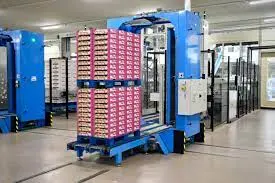smartening up “transport” robots; imagine a team of humans and robots collaborating to handle online orders. Human employees would be strategically placed among their robotic teammates, who would be intelligently traveling back and forth in a warehouse, selecting items to transport to customers. Thanks to University of Missouri researchers who are aiming to accelerate internet delivery by creating a software model aimed at making “transport” robots smarter, this may become a reality sooner rather than later.
According to Sharan Srinivas, an assistant professor who holds joint appointments in the departments of Industrial and Manufacturing Systems Engineering and Marketing, “the robotic technology currently exists.” “Our aim is to plan effectively in order to make the best use of this technology. For example, “How do you optimize the route plan for the human pickers and robots given a list of goods to pick?” “How many items should a robot pick in a given tour?” or “In what order should the items be collected for a given robot tour?” The human worker will also be asked a similar series of questions. Optimizing the strategy for cooperation between robots and human pickers is the hardest aspect.”

Currently, fulfilling internet orders requires a lot of labor and costs money. Collaborative robots, sometimes referred to as cobots or autonomous mobile robots (AMRs), have already been developed by robotic firms to work in a warehouse or distribution center to help optimize this process. The AMRs have sensors and cameras to aid in guiding them around a controlled environment, such as a warehouse. According to Srinivas, the suggested strategy will accelerate client order fulfillment by enhancing the fundamental choices or issues surrounding cooperative order selecting.
The robot is intelligent, so if it is told to travel to a specific place, it can navigate the warehouse without running into any people or other barriers, according to Srinivas.
Srinivas, who specializes in data analytics and operations research, said AMRs are not designed to replace human workers, but instead can work collaboratively alongside them to help increase the efficiency of the order fulfillment process. For instance, AMRs can help fulfill multiple orders at a time from separate areas of the warehouse quicker than a person, but human workers are still needed to help pick items from shelves and place them onto the robots to be transported to a designated drop-off point inside the warehouse.

AMRs are not intended to replace human workers, according to Srinivas, an expert in data analytics and operations research, but rather to work cooperatively alongside people to boost the effectiveness of the order fulfillment process. AMRs, for example, can complete orders from different parts of the warehouse more quickly than people can, but people are still needed to pick products off shelves and load them onto the robots so that they may be carried to a predetermined drop-off location inside the warehouse.

The inability of these robots to grasp objects well is their one disadvantage, according to Srinivas. “We are attempting to combine the strengths of both resources—human workers and collaborative robots—because humans are skilled at grabbing objects. In this instance, the people are dispersed around the warehouse, so rather than having one worker traverse the entire aisle and pick up many products along the way, the robot will approach the human worker, who will then grab an item and load it onto the robot. As a result, the human worker won’t have to exert too much effort to wheel bulky carts containing heavy things around the warehouse.”
In the future, Srinivas added, their program might potentially be utilized in other places, like grocery shops, where robots might be employed to fulfill orders while simultaneously navigating around customers. He anticipated that this might occur during the next three to five years.
The International Journal of Production Economics published an article titled “Collaborative order picking with multiple pickers and robots: Integrated approach for order batching, sequencing, and picker-robot routing.” The study’s co-author is Shitao Yu, a PhD candidate in the MU Department of Industrial and Manufacturing Systems Engineering.
Read More
- A secure global supply chain is possible with blockchain.
- Using electricity to locate materials that can “learn” is shocking to the system
- Cracking of Eggshells using computing power
- A Way To Help Reduce Global Warming Is Through Solar Energy Conversion



